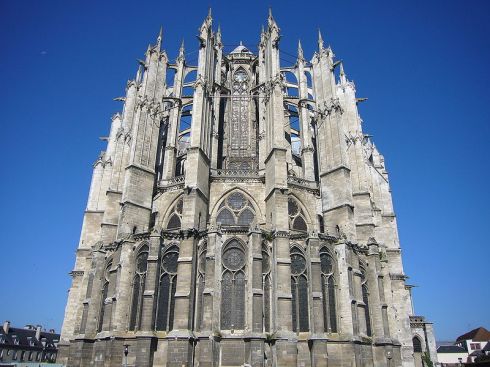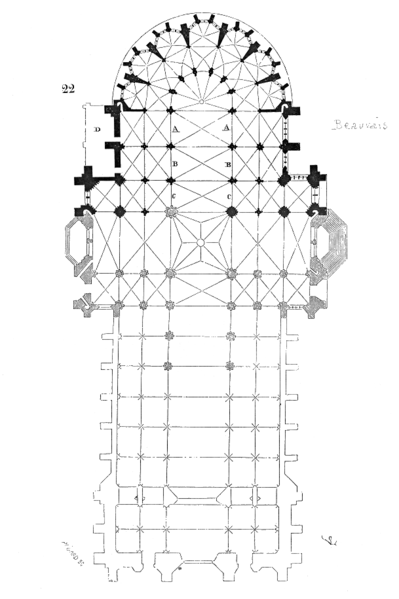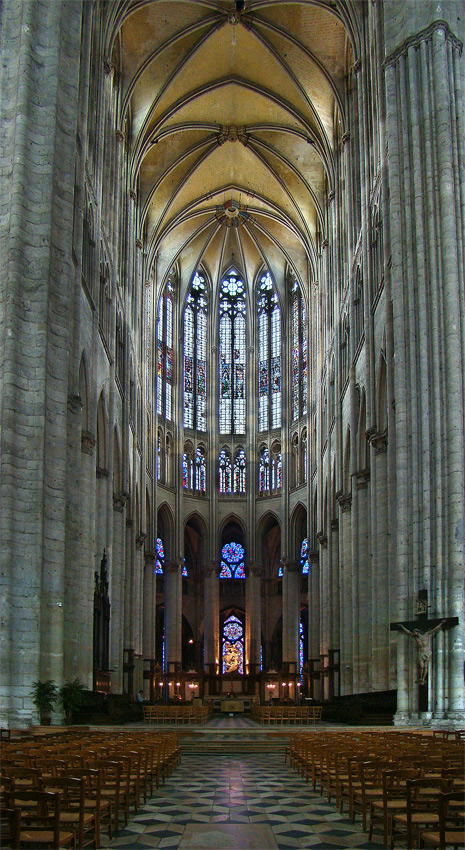By its very nature building involves limits. The great cathedrals of Medieval Europe were the apogee of technology during their time—the peak accomplishment of the architects, masons, and artisans of the day. As the centuries passed, the mighty churches became larger and more ambitious—the buildings soared ever higher on increasingly lofty flying buttresses until finally the builders reached the limits of stone and iron and mortar.
This happened at the Cathédrale Saint-Pierre de Beauvais (hereafter Beauvais Cathedral) an incomplete cathedral which many people regard as the most daring achievement of Gothic architecture. Work was commenced on the cathedral in 1225. From the very beginning the building was designed to be the tallest and most splendid church in the world. This magnificence was probably partially intended as an act of defiance by France’s northern barons, who were allied with the episcopacy in a struggle with the French throne–a struggle for power which culminated when the northern lords revolted against Louis VIII and attempted to kidnap his son Louis IX (who escaped the plot to ascend first to the throne and later to sainthood, and after whom Saint Louis, Missouri is named). Unfortunately the grandiose architectural plans were hampered by funding problems and by structural flaws.
Although Beauvais Cathedral was intended to be taller than other cathedrals, the original planners also designed the flying buttresses to be thinner. This was both to allow them to soar higher (since they weighed less!) and to allow maximum light into the stained glass windows of the building. Unfortunately the design did not work out. The cathedral collapsed in 1284 (well, actually only part of the choir vault collapsed, along with multiple flying buttresses). Contemporary structural engineers believe that the failure was the result of resonant vibrations—an unhappy mixture of spindly buttresses which were just the wrong length to cope with the region’s high winds. The cathedral was built and rebuilt off and on throughout the following centuries, with mixed results. In 1573 the structure suffered another major setback when the 153 meter tall central tower collapsed.
Today only the transept and choir remain, but they are indeed magnificent. Unfortunately, the structure is still in peril. In the sixties, the cathedral’s caretakers removed iron bars which were laterally connecting the buttresses in hopes of making the cathedral look even more graceful. Unsurprisingly, this action caused the transept to separate from the choir. Steel rods were quickly added, but, being more rigid than iron, they seem to have increased the rate of fissure. A wide number of sundry modern braces were added throughout the eighties and nineties, and in 2001 a team of architects from Columbia University scanned the entire edifice. They hope to use their comprehensive imaging resources to design less unwieldy solutions to the cathedral’s many problems, but, at present, the world’s most ambitious gothic edifice remains a masterpiece of beauty but a failure of function.





4 comments
Comments feed for this article
May 30, 2016 at 3:33 AM
Top 10 Tallest Churches In The World | 10Awesome.com
[…] Source […]
February 13, 2019 at 4:17 PM
Andy Gonzales
If it failed, its not an achievement. Great as the Gothic Cathedrals are, there were failures. Most of the failures not longer exist. Beauvais, at least, gives us the opportunity to study a failure and fully appreciate the Gothic Cathedral experience .
February 13, 2019 at 4:18 PM
Andy Gonzales
… no longer
February 13, 2019 at 11:08 PM
Wayne
I hear what you are saying…but there is no teacher quite so uncompromising and filled with important lessons as failure.